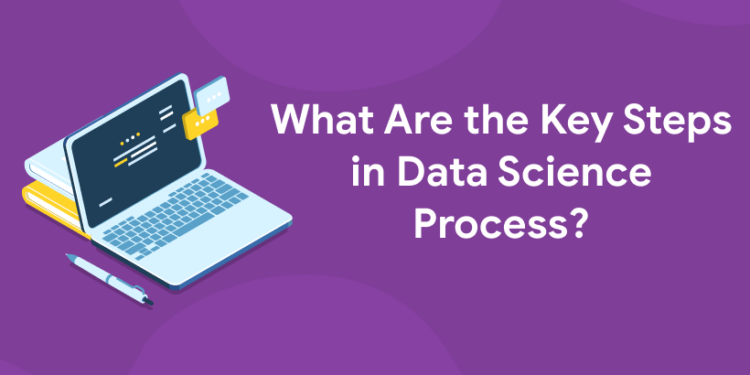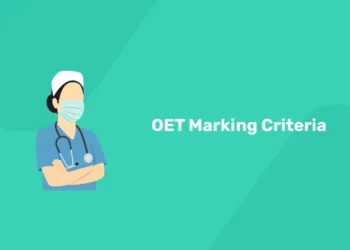Table of Contents
Data science has become the new buzzword in the world of business, industry and science because of its potential to create value through analytics. When you hear someone talk about data science, they’re generally referring to the process of extracting insights from structured and unstructured data, transforming these insights into useful information and then using this information to make better decisions with your business or organization. However, there are 10 key steps in data science that you should be aware of if you’re thinking about working in this field or seeking to expand your knowledge on the subject. There are many different approaches to the Data Science process and it’s important to know what to do, in which order, and how to do it properly so you can put yourself on the path to success as soon as possible. Data science has brought about dramatic changes in our daily lives. It has become an integral part of the way we live, the way we work, and the way we create things. Data Science process involves multiple steps from data collection to data analysis and visualization and also back to data collection again. Here are 10 key steps in the data science process that you can’t afford to miss if you are looking forward to being successful in the data science field. If you are interested to learn new coding skills, the Entri app will help you to acquire them very easily. Entri app is following a structural study plan so that the students can learn very easily. If you don’t have a coding background, it won’t be any problem. You can download the Entri app from the google play store and enroll in your favorite course.
Get the latest updates on data science in the Entri app
The Importance of Data Preparation
It may seem obvious, but preparing your data correctly is an essential part of a successful data science project. It will save you lots of time and energy later down the line if you spend some time ensuring that your data is ready for analysis before you start. Here are some of our top tips: Use RDBMS To Store Your Data – Relational database management systems (RDBMS) like SQL Server or Oracle should be used for storing and managing relational datasets. Using these for datasets containing one or more tables with multiple columns is vital; if you’re using CSV files, Excel spreadsheets, or any other type of file then RDBMS won’t work and it can introduce problems at a later stage. Make Sure Your Data Is Cleaned And Organized – The importance of cleaning up your data cannot be overstated. If you have messy or incomplete data, there’s no point running it through a complex machine learning algorithm because even if it gives great results, it’ll be useless. Make sure all your variables are present and well-defined—and don’t forget about missing values! Define Missing Values And Reject Bad Data – There’s nothing worse than having important pieces of information missing from your dataset so make sure you define what ‘missing’ means beforehand—and always reject bad quality data! Cleaning Up Textual Information Is Important Too – Textual information isn’t quite as simple as numerical values, but there are still ways to clean them up.
To know more about data science in the Entri app
The 2 Types of Algorithms – Machine Learning and Deep Learning
Big data refers to any dataset so large or complex that it becomes difficult to process using on-hand database management tools or traditional data processing applications. It’s often defined as data sets whose size is beyond the ability of commonly used software tools to capture, store, manage, and analyze. Extracting meaningful information from a big data set can be a time-consuming and expensive undertaking. As such, if you are preparing for an interview where your future employer will ask you about working with big data sets, focus on these 10 key steps: 1. Get Organized 2. Cleanse 3. Gain Insights 4. Understand 5. Integrate 6. Iterate 7. Display 8. Preserve 9 .Predict 10 .Plan ning How many algorithms do we need? According to KDNuggets, Machine learning (ML) has been around since before computers were invented; statistics was one of its first incarnations. But only recently have computers become fast enough and cheap enough for machine learning algorithms to become widespread The first type of algorithm is Machine Learning (ML). ML algorithms learn by example – that is, they use training data to discover patterns in datasets without being explicitly programmed where to look for them. This makes them good at identifying patterns even when they haven’t been programmed with specifics about what those patterns should look like. Machine learning also works well when there are not clear relationships between variables, but correlations between some variables do exist.
Get free placement assistance with Entri app
Working with Big Data
The volume of data has increased exponentially over recent years, which makes it difficult for organizations to process and analyze their data sets. It’s essential that business managers stay on top of emerging technologies and methodologies so they can make informed decisions with their big data. In fact, Gartner predicts that within three years, 50% of data scientists will be involved in big data projects. When working with big data sets, there are a number of steps you should follow—let’s take a look at them now For starters, you need to plan your big data project carefully. The more time and effort put into your strategy, the more successful your outcome is likely to be. Next up is establishing analytics goals: what do you want to achieve? Be sure not only consider success criteria such as achieving X growth by doing Y but also define how exactly do you plan to get there: what key performance indicators (KPIs) will tell whether or not you have succeeded? Without KPIs, it can be difficult for your team members (and yourself) to keep track of progress during a long-term project such as building analytics solutions for your organization.
Get the latest update on data science in Entri app
Benefits From Handling Big Data
For one, gathering and analyzing data provides an advantage for companies competing against other businesses. Businesses with a large volume of data can better predict consumer trends and consumer behavior, which gives them a better chance of gaining revenue than competitors that are not taking advantage of big data. As an example, Netflix based its decision on producing original shows on its large amount of user data. This is also advantageous because it gives businesses in-depth knowledge of their customers. With big data, companies can target consumers more accurately while developing new products or services they believe will be more successful and appealing to consumers. Finally, big data provides opportunities for organizations looking to streamline their processes and save money by making smarter business decisions based on available information rather than intuition alone. It’s important to note that using big data does come with some risks, however. If your company doesn’t implement proper security measures when handling and storing customer information, you risk losing valuable customer trust as well as legal liability. It’s also important to make sure you have enough staff members who are trained in data science analysis so you don’t miss anything important when interpreting your findings. For example, if you’re working with marketing research, it would be helpful to have someone who understands both marketing and analytics review your findings before passing them along to upper management. Having a team member who has experience in both areas ensures that your findings are accurate and easy for everyone involved (especially those without extensive experience) to understand.
Get the latest updates on data science in the Entri app
Advantages of Hadoop Programming Language
Hadoop is a popular software framework used by big data analytics professionals. It has been around for more than 6 years and since its introduction, it has helped many organizations with their big data analytics programs. Hadoop is developed in Java and consists of two different core parts: HDFS (Hadoop Distributed File System) and MapReduce. These two components are open source but there are a number of companies that provide support for these products. 4 Advantages of Hadoop Programming Language: Hadoop is a popular software framework used by big data analytics professionals. It has been around for more than 6 years and since its introduction, it has helped many organizations with their big data analytics programs. Hadoop is developed in Java and consists of two different core parts: HDFS (Hadoop Distributed File System) and MapReduce. These two components are open source but there are a number of companies that provide support for these products. The advantages of using Hadoop programming language include: 1. Easy to use 2. Cost effective 3. Highly scalable 4. Flexible 5. Open Source A Complete Guide To Big Data Analytics With R And Python: Big data has become one of those buzzwords that every company talks about nowadays – whether they have an interest in actually doing something with all their collected information or not – because at least they can say they’re doing something about it!
To know more about data science in the Entri app
5 Things to Know About RDD (Resilient Distributed Datasets)
RDDs are a way of storing data across multiple nodes on a network. While they can contain any type of data, most RDDs have some similar features: They can be distributed across multiple nodes on a network, they can all vary in size (because different rows need more space than others), and their data is partitioned (meaning all of them aren’t stored together). This allows for parallel processing, since each node only needs to store parts of your dataset. Spark’s RDD API has two main functions: map() and reduceByKey(). Map() processes each piece of your dataset one at a time and return some other set of values from it. ReduceByKey() takes chunks from each chunk and returns a single value. For example, if you had an RDD with 100 words and wanted to find out how many times each word appeared in that dataset, you could use map() to count how many times each word appears. Then you could use reduceByKey() to add up those counts into a final total number of occurrences. To learn more about how these work, check out our tutorial on Spark’s RDD API! Write a professional technical post based off the following description: A client who wants to implement user-friendly UI for his website/app. He would like to know whether creating additional classes or extending existing ones would be better? And what are advantages/disadvantages of doing so? A user-friendly web interface involves usability and accessibility. When developing software, think about its overall design and don’t forget about making users feel comfortable while using it. Here we will consider 2 approaches which may help you develop software according to high standards – either extend or create new classes – let’s take a closer look at both options. What should I choose?
Get the latest updates on data science in the Entri app
Benefits of Using Spark MLlib Library
The Spark MLlib library is an implementation of machine learning algorithms, including decision trees, random forests, gradient boosting, K-means clustering, and more. It’s built on top of Spark Core and uses Spark’s Resilient Distributed Datasets (RDD) abstraction. With all of these features, it offers a simple API that you can use to transform input data and make predictions on new examples without having deep knowledge of math and statistics. The following are six benefits you get from using Spark MLlib library. 5 Reasons Why R Is Great for Machine Learning: R has become one of the most popular programming languages for doing data science work. In fact, there’s no shortage of articles touting its virtues. But why? There are actually several reasons why R is great for machine learning—including its statistical computing environment, tidyverse libraries and strong community support—and they’re outlined below.
To know more about data science in the Entri app
Understanding Scala and Its Advantages over Java
Scala isn’t simply another dialect of Java; it’s actually a distinct language that compiles into Java bytecode and thus runs on JVM. But Scala also implements its own runtime, which differs from what you get when you run a JVM-based program written in Java. For example, Scala creates threads for executing code at runtime and handles memory differently than does traditional JVM-based execution. This is not surprising because Scala was developed to improve upon features offered by Java, including object-oriented programming (OOP) capabilities, functional programming (FP) capabilities, high performance, and concurrency support. Specifically: Performance: Many developers who have worked with both OOP languages like C++ and FP languages like Haskell choose FP as their preference. And one reason why they do so is that many FP languages provide better performance than OOP ones, especially where concurrent operations are concerned. Concurrency: In addition to improving performance, Scala offers other advantages over Java. For instance, unlike Java programs whose compilation process converts source code files into .class files before execution can begin, Scala programs compile directly into .class files without any intermediate steps. So there’s no need to wait for compilation to complete before running your application—you can immediately launch your application after compiling it using scalac , which is a command-line compiler included with Scala distributions. Another advantage of Scala over Java is that its type system allows types to be inferred during compilation rather than requiring them to be specified explicitly in source code files.
Get the latest updates on data science in the Entri app
8 Tips on How to Become a Data Scientist Professional
1. Understand What a Data Scientist Does: A data scientist is a person who uses all of his skills to understand and extract important information from different types of data. The data scientist needs to do some coding, statistical analysis, predictive analytics, and other processes that involve working with numbers and thinking critically. 2. Know Your Way Around Programming Languages: In most companies, you won’t be able to work as a data scientist if you don’t know programming languages like R Python or SQL – if you want to become a data scientist. 3. Learn How to Work With Big Data: To make sense of large amounts of data, you need to have knowledge about various tools and techniques used for handling big data. 4. Have Knowledge About Business Analytics: Although it may seem that business analytics is not related to data science, it actually is! It would be difficult for any organization to fully utilize its collected big data without having knowledge about business analytics. 5. Know About Machine Learning Algorithms: If you really want to make an impact on your company and show your employer how valuable you are as a data scientist professional, then mastering machine learning algorithms will definitely help!










